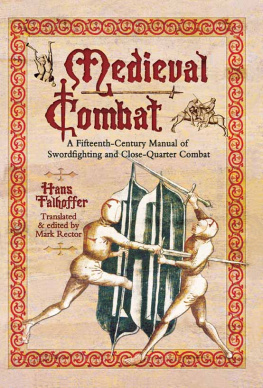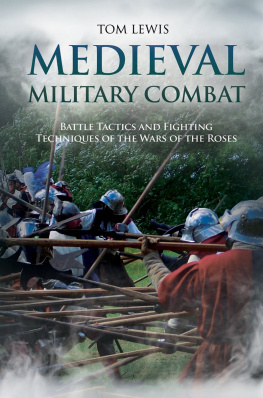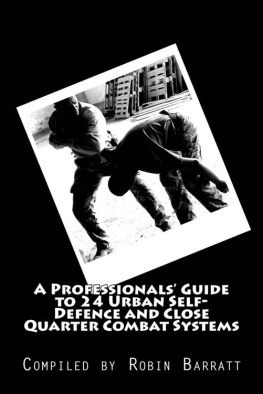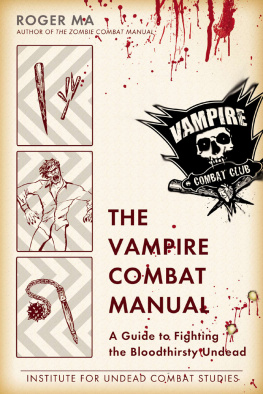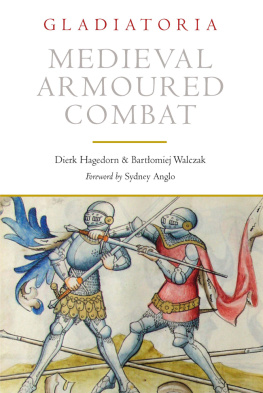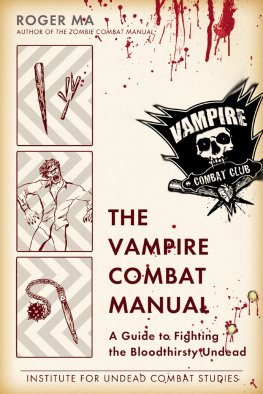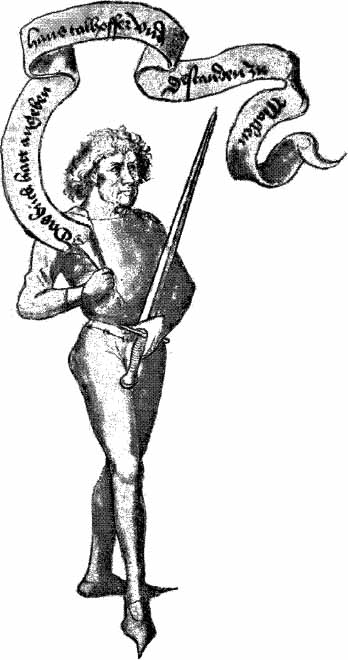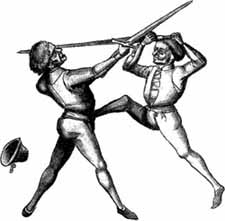Medieval
Combat
Medieval
Combat
A Fifteenth-Century Manual of
Swordfighting and Close-Quarter Combat
Hans Talhoffer
Translated and edited by Mark Rector
A Greenhill Book
First published in Great Britain in 2000 by
Greenhill Books, Lionel Leventhal Limited
www.greenhillbooks.com
Reprinted in this format in 2014 by
Frontline Books

an imprint of
Pen & Sword Books Ltd
47 Church Street
Barnsley
South Yorkshire
S70 2AS
Copyright Greenhill Books, 2000, 2014
ISBN 978 1 84832 770 2
A CIP catalogue record for this book is
available from the British Library
All rights reserved. No part of this book may be reproduced or
transmitted in any form or by any means, electronic or mechanical
including photocopying, recording or by any information storage and
retrieval system, without permission from the Publisher in writing.
Printed and Bound
by CPI Group (UK) Ltd, Croydon, CR0 4YY
For a complete list of Pen & Sword titles please contact
PEN & SWORD BOOKS LIMITED
47 Church Street, Barnsley, South Yorkshire, S70 2AS, England
E-mail: enquiries@pen-and-sword.co.uk
Website: www.pen-and-sword.co.uk
CONTENTS
| by John Clements |
| by Mark Rector |
A MODERN RENAISSANCE IN MEDIEVAL MARTIAL ARTS
Today the term martial arts is usually assumed to be synonymous with Asian fighting art. This is no surprise since popular media are notorious for misrepresenting medieval fighting. The medieval warriors craft is often reduced to the myth that combatants merely crudely bludgeoned one another or hacked and slashed savagely. Yet well established, highly sophisticated European fighting systems existed. European masters of defence produced hundreds of detailed, well-illustrated technical manuals on their fighting methods, and the people of the Germanic states were especially prolific. Their manuals present to us a portrait of highly developed and innovative European martial arts based on sophisticated, systematic and effective skills. Among the best known of these works is that of Hans Talhoffer. His influential treatise, first produced in 1443, was reproduced many times throughout the century.
Here now is the first English-language edition of the definitive work of this Fechtmeister (literally, fight master). Talhoffer, probably a follower of the Grand Fechtmeister Hans Liechtenauer, reveals an array of great-sword and two-handed sword techniques, sword and buckler moves, dagger fighting, seizures and disarms, grappling techniques, and the Austrian wrestling of Ott, a rare medieval Jewish master of whom little is known. The illustrated plates also show methods for judicial duels official fights to end legal disputes and fighting with pole-weapons. Like many other medieval fighting texts, Talhoffers manual covers fighting in full armour and without armour.
His manual reveals a range of both rudimentary and advanced techniques and provides a firm foundation on which to begin exploration of Western martial culture and the skills of medieval masters of defence. His manual covers fighting with swords, shields, spears, staffs, pole-axes and daggers, as well as grappling, throws, takedowns, holds and ground-fighting skills. Like many other teachers of his day, Talhoffer recognized that armed and unarmed fighting were only facets of personal combat and he accordingly taught an integrated art. He was greatly concerned with secrecy in both the teaching and learning of his skills, for if a fighters style were known he could be vulnerable, and a masters teaching was his own to give out as he saw fit. Talhoffers manual was not widely distributed until after his death, and even then it must have circulated very slowly among groups of practitioners.
Whether your interest is academic, historical, theatrical or martial, Talhoffers work offers todays student of European martial culture a strong starting point. While not a complete guide book on fighting from the period, it will encourage the readers own practice and understanding of the brutal effectiveness of European warriors as well as the artistry of their craft. Like many others, for years now I have been interpreting and practising Talhoffers techniques. I have studied his instructions and followed his advice with real weapons and with safe sparring tools. It has been a long but fruitful process and while such investigation remains ongoing and new insights continually appear, there is no question of the martial value and legitimacy of his teachings.
It is exciting that we are currently seeing a renaissance in the study of Western martial culture as research and study of historical European fighting arts now undergoes something of a revival. Increasingly, enthusiasts of historical fencing today are focusing on legitimate methods rather than mere competitive games and role-playing pursuits and a much greater appreciation for the sophistication and effectiveness of medieval and Renaissance fighting skills has emerged. A new generation of serious practitioners and researchers is approaching the subject not as escapist fantasy or entertainment, not just as theatrical display, but as the study of a true martial art.
Earnest practice of the methods of medieval and Renaissance weaponry is increasing in popularity today as students rediscover the many works of European masters of defence. A renewed interest in and appreciation of the formidability and complexity of both medieval and Renaissance arms and armour has evolved. Most satisfying is the tremendous increase in the availability of translations of the old fighting manuals, but even so we have only begun to scratch the surface in the serious study of medieval fighting arts. Talhoffers Fechtbuch (fight book) represents the tip of a very large iceberg.
John Clements
Author of Medieval Swordsmanship and
Director of the Historical Armed Combat Association
2000
This is the very first English translation of Master Hans Talhoffers Fechtbuch, or Fight Book, from the year 1467, one of the most influential and lavishly drawn fencing manuals of the fifteenth century. Talhoffer (c1420c1490) was master of arms to the Swabian knight Leutold von Knigsegg, a feudatory of Count Eberhardt the Bearded of Wrttemberg. At least six illustrated manuals were produced under Talhoffers name, covering an astonishing variety of armed and unarmed combat techniques. The most commonly known manuscripts were drawn in 1443, 1459 and 1467. Fencing scholar Gustav Hergsell discovered this last manual at the end of the nineteenth century in the library of Ernst II, Duke of Saxe-Coburg-Gotha, and translated the original Swabian text into German, publishing his version in Prague in 1887.
Hergsell describes Talhoffers manuscript in his introduction:
The original drawings were made with pen and ink on parchment sheets, and boldly coloured. The cross is drawn in red upon the shields, caps, chests and backs of the shield-fighters. In some of the drawings, blood spurts from wounds, and the shields are coloured yellow. The drawings appear on both sides of each leaf.
Next page
